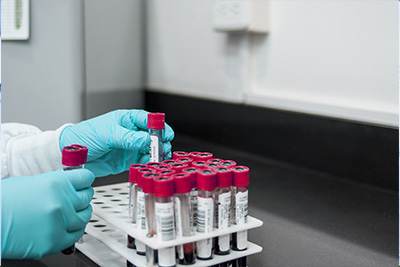-
![Catalyst Regenerat···]() 2024-12-10 Catalyst Regeneration Techniques for···
2024-12-10 Catalyst Regeneration Techniques for···Catalyst regeneration techniques are crucial for enhancing the efficiency and sustainability of reverse esterification processes involving tin catalysts. These methods aim to restore the catalytic activity of spent catalysts by removing deactivating deposits or poisons. Common approaches include thermal treatment, chemical treatments, and solvent extraction. Thermal regeneration involves heating the catalyst to high temperatures to burn off accumulated residues. Chemical regeneration uses specific reagents to react with and remove deactivated components. Solvent extraction helps in dissolving and washing away impurities. Each technique has its advantages and limitations, and the choice depends on the specific process conditions and catalyst properties. Overall, these regeneration techniques significantly extend catalyst lifespan and reduce operational costs in industrial applications.
read more > -
![Scaling Up Reverse···]() 2024-12-10 Scaling Up Reverse Ester Tin Product···
2024-12-10 Scaling Up Reverse Ester Tin Product···Scaling up the production of reverse ester tin involves several challenges, such as maintaining reaction consistency, managing heat dissipation, and ensuring product purity. To address these issues, process optimization, advanced heat exchange systems, and rigorous quality control measures have been implemented. These solutions not only enhance yield but also improve overall efficiency and sustainability in the manufacturing process.
read more > -
![Process Control St···]() 2024-12-10 Process Control Strategies for Enhan···
2024-12-10 Process Control Strategies for Enhan···The article discusses advanced process control strategies aimed at improving the efficiency of tin esterification reactions. It highlights the importance of precise temperature and pressure management, as well as optimal catalyst utilization, to enhance yield and product quality. The strategies involve real-time monitoring and adjustment mechanisms, leveraging automation and data analytics to achieve consistent and high-quality outputs. This systematic approach not only optimizes reaction conditions but also minimizes by-products, thereby increasing overall process efficiency and economic viability in industrial applications.
read more > -
![Best Practices for···]() 2024-12-10 Best Practices for Handling and Stor···
2024-12-10 Best Practices for Handling and Stor···Here is a 147-word English summary based on the title you provided:,,Safe handling and storage of reverse ester tin is crucial to prevent accidents and ensure product quality. Key practices include using dedicated equipment and containers to avoid contamination. Personal protective equipment such as gloves, goggles, and respirators should be worn during all stages of handling. Proper ventilation is essential in work areas. Storage should be in cool, dry conditions away from incompatible materials. Detailed labeling and strict access controls are necessary for safety and regulatory compliance. Regular training of personnel on these best practices is recommended to minimize risks. Adhering to Material Safety Data Sheet (MSDS) guidelines is also vital for safe management of reverse ester tin.
read more > -
![Industrial Applica···]() 2024-12-10 Industrial Applications of Reverse E···
2024-12-10 Industrial Applications of Reverse E···Reverse ester tin compounds have found significant applications in polymer processing due to their excellent catalytic properties. These compounds are widely used as heat stabilizers for PVC, enhancing its thermal stability during processing and prolonging its lifespan. Additionally, they act as efficient catalysts in the synthesis of polyurethanes and polyester resins, improving the reaction efficiency and product quality. The unique characteristics of reverse ester tin, such as low toxicity and high catalytic activity, make them indispensable in various industrial sectors, including plastics and coatings. Their ability to facilitate smooth polymerization reactions without degrading the polymer structure makes them a preferred choice over other catalysts.
read more > -
![Reverse Ester Tin:···]() 2024-12-10 Reverse Ester Tin: Emerging Technolo···
2024-12-10 Reverse Ester Tin: Emerging Technolo···"Reverse Ester Tin" technologies represent a groundbreaking advancement in chemical synthesis aimed at achieving higher purity and yield. These methods focus on innovative approaches to esterification reactions, utilizing reverse micelles and tin-based catalysts. This approach not only enhances the efficiency of the process but also minimizes waste and improves product quality. The development of such technologies signifies a significant step towards more sustainable and environmentally friendly chemical manufacturing processes.
read more > -
![Quality Control St···]() 2024-12-10 Quality Control Standards in Reverse···
2024-12-10 Quality Control Standards in Reverse···The manufacturing of reverse ester tin involves stringent quality control standards to ensure product consistency and efficacy. Key parameters include the purity of raw materials, reaction conditions, and post-reaction treatments. Stringent testing protocols are implemented at various stages to monitor and maintain the desired chemical properties, such as molecular weight distribution and functional group integrity. Compliance with industry regulations and guidelines is crucial, and continuous process improvement ensures optimal yield and quality. Effective quality management systems help in identifying and mitigating potential risks, thereby enhancing overall product reliability and customer satisfaction.
read more > -
![Efficient Separati···]() 2024-12-09 Efficient Separation Techniques in R···
2024-12-09 Efficient Separation Techniques in R···Reverse esterification is a critical process in the production of ester compounds, often involving tin catalysts. Efficient separation techniques are essential to recover and reuse these catalysts, enhancing both yield and sustainability. Common methods include filtration, centrifugation, and solvent extraction. Each technique has its advantages and limitations depending on the specific reaction conditions and product properties. For instance, filtration is straightforward but may not be effective with fine precipitates. Centrifugation offers higher separation efficiency but requires careful control of parameters like rotor speed and time. Solvent extraction, while more complex, provides excellent recovery rates and can be adapted for various systems. The choice of technique depends on optimizing these factors to achieve high purity and catalyst recovery.
read more > -
![Reverse Ester Tin ···]() 2024-12-09 Reverse Ester Tin Supply Chain Chall···
2024-12-09 Reverse Ester Tin Supply Chain Chall···The reverse ester tin supply chain faces significant challenges due to geopolitical tensions, raw material scarcity, and fluctuating demand. These issues have led to increased costs and supply uncertainties. To address these problems, companies are focusing on diversifying suppliers, investing in research and development for alternative materials, and enhancing inventory management systems. Additionally, fostering stronger relationships with key stakeholders and implementing flexible procurement strategies can help mitigate risks and ensure a more stable supply chain.
read more >









